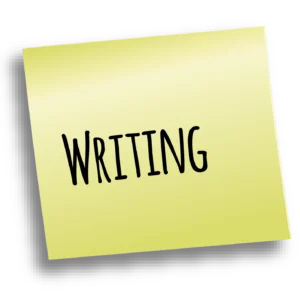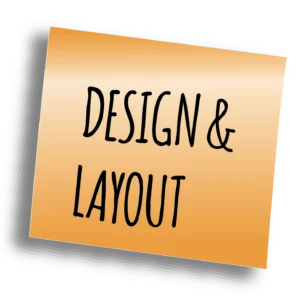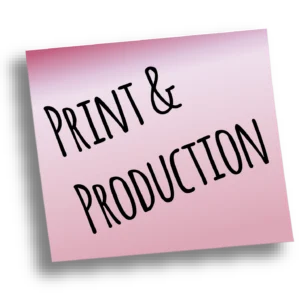BIG IDEAS LIBRARY PUBLISHING GUIDES
Non-Fiction Books
Things to think about when self-publishing your non-fiction book.
From writing to promotion, print and eBooks. These guides are for general guidance because every book is unique.


How to write and publish a non-fiction book
Non-fiction books include business books, how-to guides, recipe books, text books, biographies and indeed any book that draws on facts, real events and information, rather than a writer’s imagination.
Pre-Production Phase
Q: When planning, what are the key differences between non-fiction and other book types?
A: Non-fiction books benefit from you establishing your credibility and expertise early on. Clearly demonstrating your authority on the subject and how your unique perspective adds value to existing knowledge in your field.
Q: How do I validate my non-fiction book idea before writing?
A: Research your competition thoroughly and identify the gap your book will fill. Survey your potential audience to understand their ‘pain’ points, in other words, the areas they need help with. Before committing to a book, it’s often a good idea to consider starting with blog posts or articles to test reader interest and gather feedback to better inform your approach.
Q: What should I consider when defining my target audience for non-fiction?
A: Be specific about your reader. Who are they, where are they and what resources will attract and interest them? Think about their professional background and current knowledge level. Non-fiction readers want to solve specific problems or gain particular skills or understanding, so it’s important for you to be clear on what transformation your book will provide.
Q: How do I structure my non-fiction book effectively?
A: Create a logical progression that takes readers from their current state to their desired outcome. Use clear chapter divisions, subheadings, and consider including case studies, examples and actionable takeaways. This type of detailed approach is more critical for non-fiction than fiction books.
Q: What credentials or research do I need before writing?
A: Ensure you’ve got sufficient expertise, experience, or research to support your subject matter. Plan to include citations, references, and sources. If covering specialised topics, consider having experts or others experienced in the field review your content for accuracy.
Q: How important are supporting materials in non-fiction?
A: Supporting materials are crucial and attractive to readers. Plan for charts, images, graphs, case studies, worksheets, checklists, and other practical tools that reinforce your content. These elements often differentiate successful non-fiction books from mediocre ones.

Design and Layout Phase
Q: What visual elements should I plan for in non-fiction books?
A: Consider infographics, process diagrams, flow charts, and step-by-step visual guides that make complex information accessible to as many readers as possible. Think too about introducing illustrated elements to add a quirky or fun style. This would be a decision based on your target audience and what would attract them. An obvious example would be books aimed at children. But adults too, like imagery to break up text, create a style, and add interest.
Q: How do I make my non-fiction book scannable and user-friendly?
A: Use consistent formatting for similar elements, include plenty of white space, and break up long text blocks with subheadings. Non-fiction books benefit from clear information hierarchy through headings, subheadings, bullet points, sidebars, and callout boxes. Consider including chapter summaries, key takeaways boxes, and action items.
Q: What’s the best approach to fact-checking and accuracy?
A: Implement a rigorous fact-checking process with multiple review stages. Have experts in your field review relevant sections, verify all statistics and citations, and ensure claims are supported by credible sources. Accuracy is paramount and non-negotiable in respected non-fiction books.
Q: How should I handle references and citations in the design?
A: Plan for a consistent citation style throughout your book. Decide whether to use footnotes, endnotes, or in-text citations. Include a comprehensive bibliography or reference list, and consider adding a “Further Reading” section for readers who want to dive deeper and read the books, essays, or articles you reference throughout your work.
Q: What role does indexing play in non-fiction books?
A: An index is a way for readers to quickly pinpoint specific information, concepts, or examples throughout your book. Essential for most non-fiction books, and usually found at the end, ideally a professional indexer should be engaged, so plan for this expense and timeline in your production schedule.

Print and Production Phase
Q: Are there special printing considerations for non-fiction books?
A: Consider a paper quality that works well for highlighting and note-taking, as many non-fiction readers annotate their books. If your book includes worksheets or practical exercises, ensure the binding allows the book to lie flat when open and is robust enough to cope with this type of repeated use.
Q: What files do I need for print production?
A: You’ll need print-ready PDFs created from your final, proofread manuscript. These should be high-resolution files suitable for professional printing; often, printers will want to supply you with their own PDF settings. If you need help with this, seek advice.
Q: How do I handle different digital formats for non-fiction distribution?
A: Prepare high-resolution PDFs for pre-press, and request digital proofs as needed. For ebooks, you’ll need files converted to EPUB and MOBI formats for distribution through Apple iBooks (EPUB), Amazon (KCF), Kobo (PUB), and bookstore. These formats are responsive, which means the font size changes to adapt to the digital device that your reader is using. However, beware if you are including charts, illustrations, photos, or other diagrams; these can cause issues in eBook formats – if you are using these, use a PDF format, which while not being responsive to the text size changes, is a format that most digital reading devices support.
Q: What about companion materials and resources?
A: Many successful non-fiction books include downloadable resources, templates, or online companions. Plan how these will be hosted, for example, from your or a third-party’s website. Do’t forget to ensure they’re mentioned appropriately in your book marketing as an enticement to readers!
Q: How do I optimise my non-fiction book for different sales channels?
A: Consider how your book will be discovered and sold. Academic non-fiction has different distribution needs than popular non-fiction. Professional and educational markets may require different formatting or special editions.

Content Strategy and Positioning
Q: How do I position my non-fiction book in a crowded market?
A: Identify your unique angle or approach that differentiates your book from competitors. This could be your personal experience, a new methodology, updated research, or a fresh perspective on established concepts.
Q: What’s the ideal length for a non-fiction book?
A: Length depends on your topic and audience expectations. Business books typically range from 40,000-70,000 words, while academic texts may be longer. Focus on providing complete value rather than hitting a specific word count. Remember it is your reader and their needs that count.
Q: How do I balance depth with accessibility?
A: Know your audience’s expertise level and write accordingly. Use clear explanations for complex concepts, provide examples and analogies, and include glossaries for technical terms. Consider having a pre-publishing readers group taken from your target audience to review your book for clarity. Listen to their feedback and make any necessary adjustments.
Q: Should I include personal stories and anecdotes?
A: Personal stories can make non-fiction more engaging and relatable, but ensure they serve the content rather than distract from it. Use anecdotes to illustrate points, and, of course, be accurate; don’t embellish your personal reflections for self-serving or entertainment purposes.
Q. Should I use AI to help write my book?
AI is useful in terms of some aspects of research, helping structure and layout, even ideation. However, because AI draws on existing material, beware mediocre, biased, and often inaccurate outputs. AI should be viewed as a tool to assist your writing not supplant it. What will make your book stand out is your unique take on your subject: fresh ideas and concepts, personal experience and an authentic writing style.
Human authorship is required for copyright. Wholly AI-generated work, be that images, illustrations, or text, is considered public domain and not copyrightable in the UK, US, and other jurisdictions around the world.

Quality Assurance and Credibility
Q: How do I ensure my non-fiction book maintains credibility?
A: Verify all facts, statistics, and claims with credible sources. Have subject matter experts review your content, and be transparent about the limitations of your research or experience. It is important to avoid making claims you can’t support. Don’t rely on AI to fill in any gaps of knowledge. Regarding credibility, re-read the section on AI!
Q: What’s the biggest mistake non-fiction authors make?
A: Often authors will try to cover too much ground. Be all things to all people, rather than focus on solving specific problems really well. Readers prefer actionable, focused content over broad, surface-level coverage. This comes back to really zoning in on your target audience, how your book relates to them, their needs and desires.
Q: What legal considerations should I be aware of?
A: Ensure you’ve got permission for any copyrighted material you include in your book. Credit your quotes and sources and use trademark ™ or registered ® marks as appropriate. Be cautious about making regulatory, medical, legal, or financial claims without proper disclaimers. Be considered and cautious with the use of AI assistance and consider liability insurance if your book provides professional advice.
Q: How important is it to update non-fiction content over time?
A: Plan for updates from the beginning, especially for topics that change rapidly (technology, regulations, current events). Consider how you’ll handle revised editions and whether digital formats allow for easier updates.

Investment Phase
Q: What’s the most important statistic for indie authors to know?
A: Independent authors who employ professional editors and cover designers improve their sales by an average of 34%. Professional cover design alone raises sales by an average of 18%.
Q: How do I decide whether to invest in professional services?
A: Calculate the cost of professional services against your cost per copy of printing and expected sales. The improved sales from professional editing and design often justify the investment. This comes down to your cost per copy of production and the percentage that third-party sellers will take from your sales price. Also consider how you are going to despatch printed copies. Called fulfilment, some sellers will do this for you but be aware of their charges; they can be high. You need to make sure each book provides you with a return for your hard work and production costs.
Q: What should I prioritise if I’ve got a limited budget?
A: If you must choose, prioritise professional cover design first (18% sales increase) and professional editing second. However, doing both will give you the maximum benefit (34% sales increase). The outer cover is the first thing a reader will see and will make them pick up the book. A well-structured and accessible read is also key.
Q: Are there any corners I shouldn’t cut?
A: Given we’ve placed cover design before a professional edit, we’re going to follow that up with never compromising on proofreading. Errors are not acceptable, and, as you are trying to establish credibility as an expert, will destroy your efforts.

Promotion Phase
Q: What do I do about marketing my book?
A: There are many book promotion businesses who will say they can make your book a bestseller. They will charge you, and in many cases, you will not see any sales uplift at all. Be very cautious and sceptical of these offers, many now are AI driven and will massage your ego to get the sale of their service. Online activity alone is unlikely to bring you huge sales. Newsletters can be effective if you have an audience. Events and talks help create buzz and sales. The time and effort to market your book should not be underestimated, and it’s not a question easily answered in an FAQ. Be aware that writing your book is just the start!
Driving engagement to your website, blog, or social media is very much down to you. You can advertise on Amazon, Google, Facebook, etc., but remember each campaign must pay. All these expenses are coming off your book’s cover price. Start your research into your audience and where they buy their books early on in the creation process. That’s where to focus your efforts. Look at what other successful authors do to attract sales, including reviews and PR. Importantly, get trusted advice and sound professional guidance to support all your efforts.
